How to Grow a Carnivorous Pitcher Plant
Updated: Jan. 17, 2023
Carnivorous plants aren't for everyone, but if you can provide the right growing conditions, pitcher plants are fascinating and fun.
Our editors and experts handpick every product we feature. We may earn a commission from your purchases.
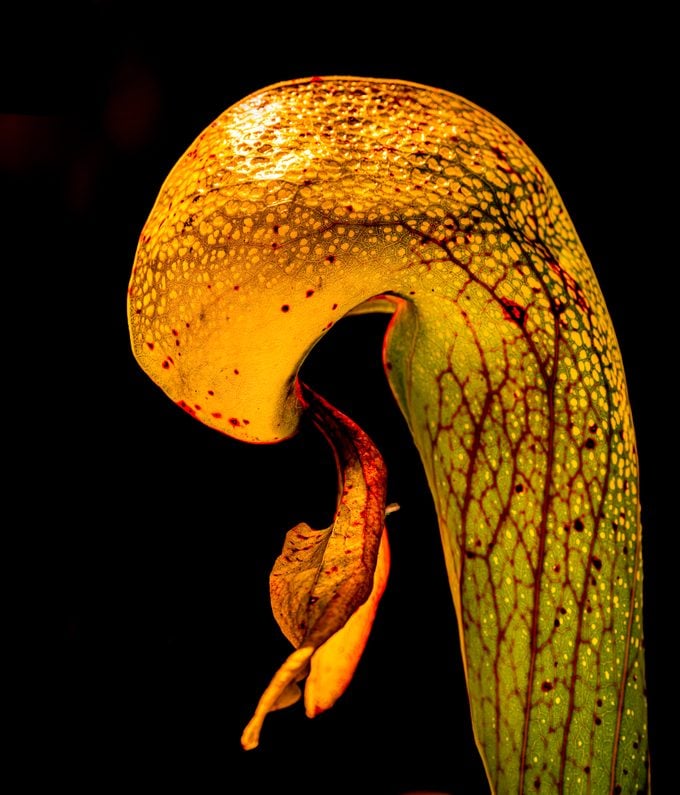
Growing carnivorous plants isn’t for the casual gardener. Those tempted by the cool Venus flytraps for sale as a novelty are likely to find their money is wasted when it dies just weeks later. But some aren’t quite so difficult, including sundews and pitcher plants. If you can provide the right growing conditions and give them the attention they need, pitcher plants can make a really interesting addition to your collection.
All About Pitcher Plants
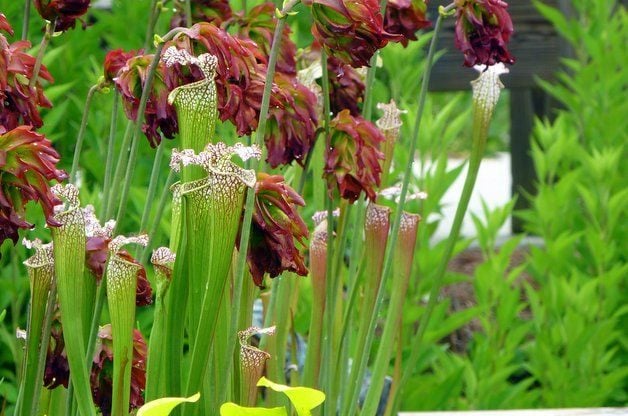
Pitcher plants make up the genus Sarracenia, and here’s something cool: all of these plants are native to the eastern United States! While they may look exotic, pitcher plants grow in bogs from Canada to Florida, with most species occurring in the southeast. Their trapping mechanism is as simple as it gets: they use pitfall traps that lure insects in with sweet nectar at the top. Insects slip on the waxy walls of the trap while downward pointing hairs and gravity do the rest. They land in the watery soup of digestive enzymes at the bottom where they drown and are digested by the plant for their nutrients.
Growing Pitcher Plants
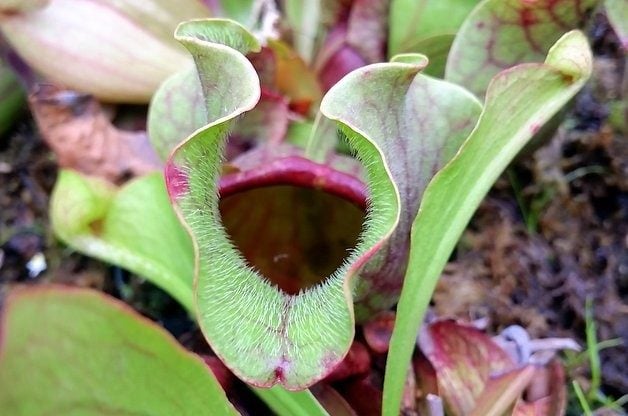
There are about a dozen species of pitcher plants in the wild, but if you’re going to grow them at home, you’ll probably have better luck with some of the hybrid species that have been developed. Try the smaller varieties like ‘Dana’s Delight’ or ‘Judith Hindle’, or grow Purple Pitcher Plant (Sarracenia purpurea), which stays fairly compact. Only buy your plants from trusted growers. Poaching plants from the wild, along with habitat destruction, has endangered pitcher plants in many places. California Carnivores is probably the most well-known and trusted grower.
More Pitcher Plant Care Tips

Growing pitcher plants successfully will probably take some experimentation. Here are a few basics:
- Soil. Don’t try to plant pitcher plants directly in the ground. They need very specific soil that mimics the bog conditions where they grow. Start small with just one or two plants, and keep them in the containers they come in. They’ll arrive potted in a sphagnum peat mix, and there’s no need to change that. If you’re successful in keeping these plants alive for a few years, you can then proceed to advanced skills like re-potting.
- Water. Set your pitcher plant’s container into a shallow dish that can hold water (no terra cotta saucers). Pitcher plants like things wet. They basically want to sit directly in an inch or two of water at all times—and not just any water. When growing carnivorous plants, few things are more important than the water you use. Growing healthy pitcher plants will require you to provide either rainwater or purified water only. Tap water or well water won’t work. (Don’t have a rain barrel yet? Now’s the time!)
- Light. The sunnier the better when it comes to pitcher plants. In the summer, you can move this plant outdoors, especially in hot humid climates where it will thrive. Try giving them 8 hours of direct sun each day.
- Food. Of course the fun of growing carnivorous plants is feeding them bugs! If you grow your pitcher plant outdoors, it will feed itself naturally. If you grow your plant indoors exclusively, you may need to feed it small insects like crickets or mealworms from time to time. Just drop them down the pitcher—the plant will do the rest. (Speaking of crickets, learn all about the crickets and katydids that sing in your garden at night.)
Winter Dormancy
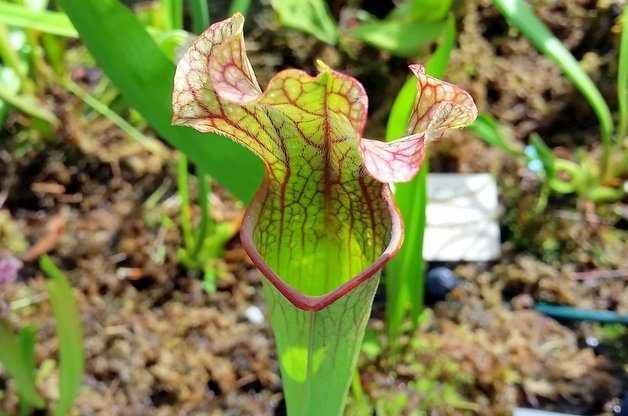
In the winter, pitcher plants rest, like most other plants. The pitchers will brown and possibly die back to the ground. At this point, the plants want to be chilled (remember, they grow in the eastern U.S., where winters can get pretty darn cold). If you live in the southeast, where freezes are rare, you can actually just allow your plant to stay outdoors. If you live further north, try overwintering it in a sunny window in a cool room of your house. This will give it cooler temperatures but still provide sunlight. Don’t overwinter this plant in a garage or basement—it needs more light, even during dormancy.
In the spring, pitcher plants will let you know they’re awake by beginning to flower. (Pitchers themselves aren’t flowers; they’re modified leaves.) Many pitcher plants throw their flowers stalks several feet into the air, high above where their pitchers will grow. You can enjoy the strange and elaborate flowers (an example is shown below), but trim them back after about a week to encourage the pitcher plant to start growing pitchers again.
Dormancy requirements can be tricky, so don’t be disappointed if your plant doesn’t return in the spring the first year. You may have to replace it and try again. (I told you growing carnivorous plants isn’t for the casual gardener!)
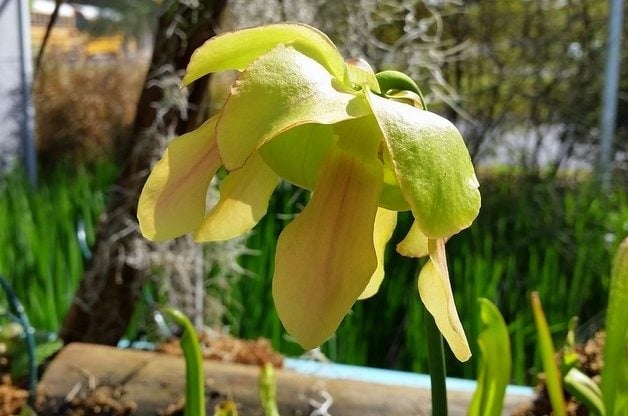
If you’re really interested in growing pitcher plants and want to learn more, start by reading the book Savage Garden by Peter D’Amato, considered by many the definitive handbook for growing carnivorous plants.




















